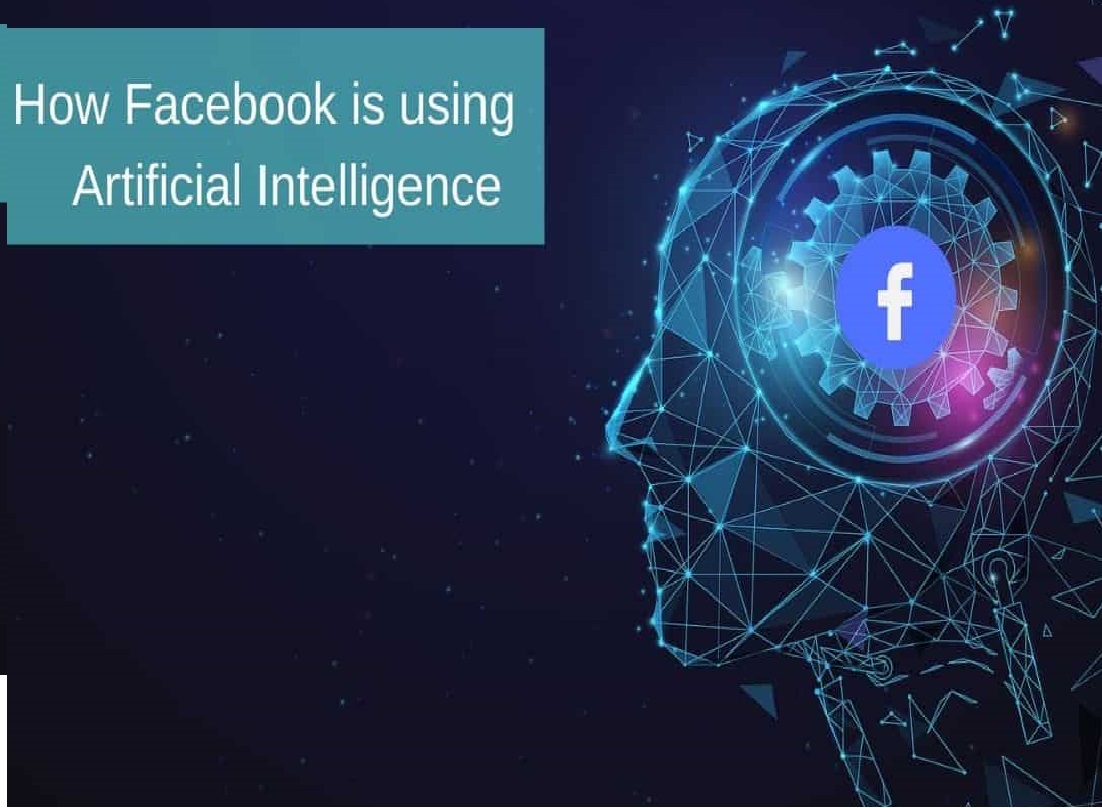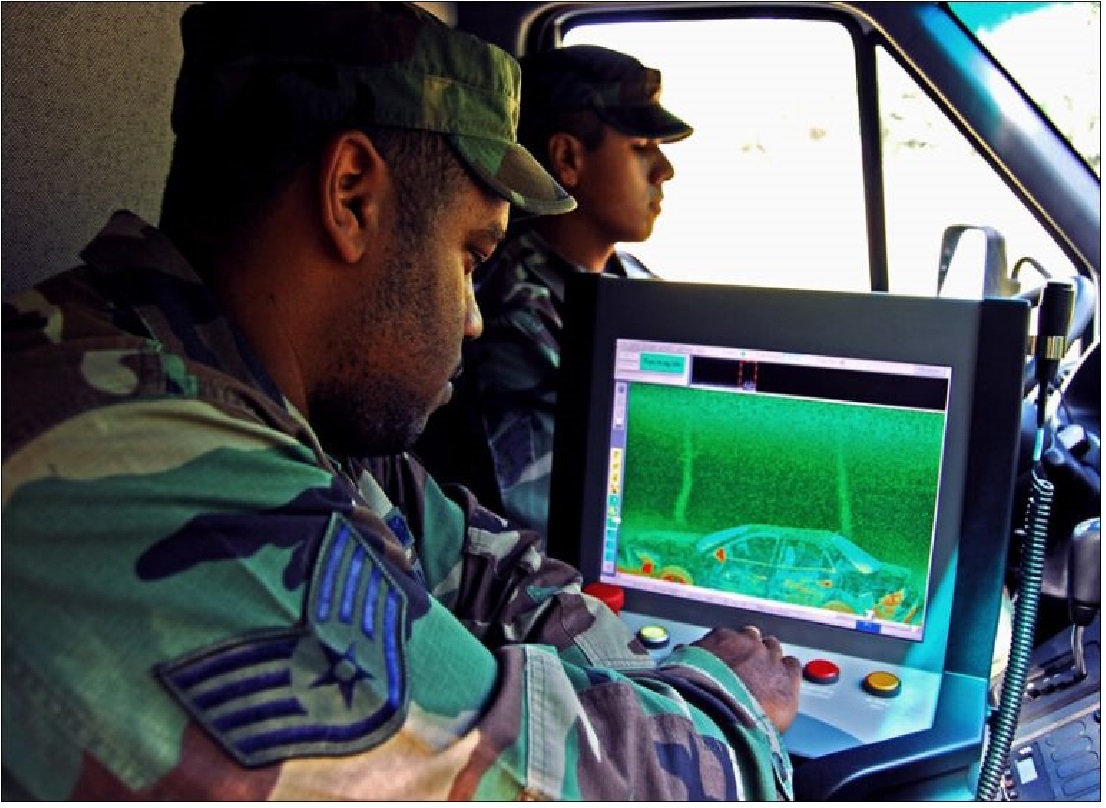The new article from Google, which was published in Nature, advances the future of AI-powered medicine by making it more automated, which in turn reduces expenses and relieves the workload of clinicians so that they can attend to more difficult situations.
There are instances when it might not be anything serious at all, and there are other occasions when a thorough inquiry might be necessary.
Let’s say you go to the doctor with a collection of symptoms that are completely perplexing. Obtaining the correct diagnosis in a timely manner is of the utmost importance; nonetheless, even the most experienced physicians might occasionally struggle to put the pieces of the puzzle together. There are instances when it might not be anything serious at all, and there are other occasions when a thorough inquiry might be necessary. It is not surprising that artificial intelligence systems are making progress in this area, as we have already seeing them assisting with activities that require reasoning about established patterns becoming growing more and more common. On the other hand, it appears that Google has just made a significant step forward in the direction of working toward the realization of “AI doctors.”

It is not wholly new that artificial intelligence has been “introduced” into the field of medicine; algorithms, including several algorithms based on AI, have been assisting physicians and researchers in activities such as image interpretation for many years. In more recent times, we have witnessed both anecdotal and proven evidence that artificial intelligence systems, specifically Large Language Models (LLMs), have the potential to aid medical professionals in their diagnosis, with some claims claiming about the same level of accuracy. In contrast, the situation is entirely different in this instance due to the fact that the new work from Google Research incorporated an LLM that was specially trained on datasets that related observations with diagnoses. Despite the fact that this is just the beginning, and that there are numerous obstacles and things to think about in the future, as I will explain, the reality remains that a formidable new AI-powered player is entering the field of medical diagnosis, and we had better get ready for it. As I progress through this article, I will mostly concentrate on the operation of this new system, highlighting various concerns that come up along the way. Some of these factors are mentioned in the paper that Google published in Nature, while others are disputed in the relevant communities, such as medical physicians, insurance companies, policy officials, and so on.
Introducing Google’s New and Outstanding Artificial Intelligence System for Medical Diagnosis
The introduction of sophisticated LLMs, which are artificial intelligence systems that have been trained on vast datasets to “understand” and generate text that is similar to that of humans, is causing a significant shift in the way that we process, analyze, condense, and generate information (at the end of this article, I posted some other articles related to all of that; you should go check them out!). In particular, the most recent models introduce a new capability: the ability to engage in nuanced, text-based reasoning and discussion. This makes them ideal collaborators in complicated cognitive activities such as diagnosis. In point of fact, the recent work from Google that I will be discussing today is “just” one more point in a subject that is fast expanding and investigating how these advanced artificial intelligence tools may comprehend and offer contributions to clinical procedures.
What we are looking into here is a study that was published in the respected magazine Nature after being subjected to peer review. This study caused waves to be felt across the medical community. A specialized form of LLM known as AMIE, which stands for Articulate Medical Intelligence Explorer, is presented by Google Research in their article titled “Towards accurate differential diagnosis with large language models.” AMIE was trained specifically with clinical data with the intention of assisting medical diagnosis or even operating fully autonomously. AMIE’s capacity to generate a list of probable diagnoses, or what medical professionals refer to as a “differential diagnosis,” was put to the test by the authors of the study. The study was conducted on hundreds of tough case reports published in the real world that involved complex medical issues. With all of the technical details included, here is the paper: s41586-025-08869-4 is the article that can be found on Nature.com.
Lets discuss Unexpected Outcomes and Results
Lets Explain the results left a strong impression, and compared to the diagnostic accuracy of experienced physicians working without assistance, AMIE’s diagnostic accuracy was much greater when it worked independently, simply reading the language of the case reports. The accurate diagnosis was included in the top-10 list of AMIE about sixty percent of the time, whereas the unsupported doctors only included it about thirty-four percent of the time.
AMIE alone marginally outperformed doctors who were supported by AMIE itself, which is a really intriguing finding and a positive sign for the AI system and its capabilities. However, despite the fact that doctors who used AMIE were able to achieve a substantially higher level of accuracy when compared to those who used normal methods such as Google searches (achieving over 51% accuracy), the AI on its own still managed to edge them out somewhat on this particular parameter for these difficult instances.
In this most recent study that compared AMIE to human specialists, and the AI system simply assessed the text-based descriptions from the case reports that were used to test it. This is another important “point of awe” that I discover. The human clinicians, on the other hand, had access to the complete reports, which included not only the text descriptions that were accessible to AMIE but also images (such as X-rays or pathology slides) and tables (such as laboratory findings). The fact that AMIE outperformed unassisted clinicians even without this multimodal information is remarkable on the one hand, and on the other hand, it highlights an obvious area for future development. The most important frontier for medical AI to truly mirror comprehensive clinical assessment is the ability to integrate and reason over multiple types of data, including text, imaging, and possibly even raw genomics and sensor data.
AMIE operating as a Highly Specialized LLM
With that being said, how is it that an artificial intelligence such as AMIE is able to accomplish such remarkable outcomes, outperforming human specialists, some of whom may have spent years identifying diseases?
AMIE, at its heart, is based on the basic technology of LLMs, which is comparable to models such as GPT-4 or Google’s very own Gemini. However, AMIE is not merely a chatbot that can be used for a variety of purposes and has medical expertise added on top of it. Particularly, it was designed to be suited for clinical diagnostic reasoning needs. This involved the following, as they are detailed in further detail in the Nature paper:
• Tweaking the basic LLM based on a huge body of medical literature that contains diagnoses is an example of specialized training data.
• Instruction tuning is the process of training the model to follow specific instructions relating to the generation of differential diagnoses, the explanation of its logic, and the interaction of the model in a clinical setting in a useful manner.
• Reinforcement Learning from Human Feedback: The possibility of utilizing feedback from clinicians in order to further enhance the responses of the model in terms of accuracy, safety, and helpfulness.
• Reasoning Enhancement: Methods that are designed to improve the model’s ability to rationally correlate symptoms, history, and prospective conditions; these methods are comparable to those that are utilized during the reasoning steps in extremely powerful models such as Google’s very own Gemini 2.5 Pro!
The research itself reveals that AMIE fared better than GPT-4 on automated evaluations for this activity, showing the benefits of domain-specific optimization. This is something that should be taken into consideration. It is also noteworthy, but detrimental, that the research does not compare the performance of AMIE to that of other general LLMs. Let me tell you more about Google’s own “smart” models, such as Gemini 2.0 or 2.5 Pro, are included in this comparison. I find that to be rather disheartening, and I just fail to see how the reviewers of this work failed to notice this!
It is important to note that the implementation of AMIE is set up to facilitate interactive usage. This means that physicians will be able to ask it questions in order to investigate its logic, which is a significant departure from conventional diagnostic systems.

The War of Performance
The New Era process of measuring performance and accuracy in the diagnoses that are created is not an easy task, and it is intriguing for you as a reader who has a Data Science philosophy at heart.
The New Era process of measuring performance and accuracy in the diagnoses that are created is not an easy task, and it is intriguing for you as a reader who has a Data Science philosophy at heart. In their work, the researchers did not simply evaluate AMIE in isolation; rather, they utilized a randomized controlled setup in which AMIE was compared against clinicians who did not receive any assistance, clinicians who were assisted by standard search tools (such as Google, PubMed, and so on), and clinicians who were assisted by AMIE itself (who could also use search tools, but they did so less frequently).
The analysis of the data that was produced in the study included multiple metrics in addition to simple accuracy. The top-n accuracy, which asks whether the correct diagnosis was in the top 1, 3, 5, or 10?, quality scores, which ask how close the list was to the final diagnosis, appropriateness, and comprehensiveness, were the most important metrics. The latter two metrics were rated by independent specialist physicians who were blinded to the source of the diagnostic lists.
The comparison against both unassisted performance and standard tools helps assess the actual added value of the artificial intelligence. This comprehensive evaluation provides a more robust picture than a single accuracy statistic.
Why does artificial intelligence perform so well when it comes to diagnosis?
AMIE was educated on huge volumes of medical literature, case studies, and clinical data, just like other specialized artificial intelligences that are used in the medical field. When compared to a human brain that is juggling a multitude of different activities, these systems are able to analyze complex information, recognize patterns, and recall obscure conditions much more quickly and comprehensively. With due respect to AMIE in particular system, it was specially designed for the kind of reasoning that doctors employ while diagnosing, which is comparable to other reasoning models but in this particular instance is tailored for gianosis.
It is possible that AMIE’s capacity to sort through alternatives without being influenced by human prejudices gives it an advantage when it comes to the exceptionally challenging “diagnostic puzzles” that were employed in the study (which were derived from the respected New England Journal of Medicine). In the extensive conversation that this paper sparked throughout social media, an observer made the observation that it is remarkable that artificial intelligence performed exceptionally well not only on straightforward situations, but also on certain cases that were quite difficult.
It’s surprising to find that AMIE performed slightly better on its own than when it was used alongside human specialists. Logically, we would expect the best results from combining the expertise of a doctor with the power of AI, as previous research has shown.
Doctors who used AMIE did perform significantly better than those without it, generating more accurate and comprehensive diagnostic lists. However, interestingly, AMIE alone still edged out doctors who were supported by it.
In this particular study, why does AI alone have a minor advantage?
In this particular study, why does AI alone have a minor advantage? Many medical professionals on social media have pointed out that the small difference in performance between doctors and AMIE doesn’t mean doctors are making the AI worse or vice versa. Instead, it suggests that doctors are still figuring out how to best collaborate with AI, which has stronger analytical capabilities for specific tasks. Since they’re not fully familiar with the technology, it’s similar to how we sometimes struggle to work with regular LLMs when we need help.
Doctors may also be holding onto their own opinions too strongly, a phenomenon known as “anchoring bias,” or they might not know how to best interact with AI to get the most useful insights. This highlights the need to learn how to collaborate effectively with machines, forming a new kind of teamwork.
Will AI Replace Doctors in the Future?
No, absolutely not. It’s important to recognize the limitations of AI. The research involving AMIE used written case reports, which are simplified and pre-packaged information, not the real-life complexity of diagnosing actual patients.. This is a significant departure from the raw inputs that physicians have during their contacts with patients. Real medicine requires interacting with patients, gaining a grasp of their medical history, carrying out physical examinations, recognizing nonverbal clues, establishing trust, and coordinating continuing treatment. These are all tasks that artificial intelligence is not currently capable of accomplishing. Not only does medicine include the analysis of facts, but it also involves human connection, empathy, and the ability to navigate uncertainty. Consider phenomena like placebo effects, phantom pain, and physical examinations—these are aspects of medicine that AI simply cannot handle.
LLMs can still make mistakes or “hallucinate” information, which is a major concern. Even though AI is advancing, it’s not perfect. So, even if AMIE were to be implemented (which, to be clear, it won’t be!), it would still require close oversight from skilled professionals. it would require very strict supervision from individuals who are skilled in the field.
• This is just one specific task: the generation of a diagnostic list is just one part of a doctor’s job. The rest of the visit to a doctor, of course, consists of many other components and stages, none of which are handled by such a specialized system, and it could be very difficult to accomplish for the reasons that have been discussed.
In a surprising development, Google Research published another paper in the same Nature issue following the AMIE study. This second paper reveals that AMIE also outperforms physicians in diagnostic conversations, where the AI engages directly with the patient, not just analyzing symptoms.
While the first study showed that AMIE provided a more accurate diagnosis, the second paper highlights that the AI also excels in communicating the results. It does so not only with greater clarity but also with more empathy, improving the quality of interaction between the AI and the patient.
And the results are not insignificant: in 159 simulated cases, primary care physicians rated the AI higher than the AI on 30 out of 32 metrics, while test patients preferred the AMIE on 25 out of 26 measurements. This indicates that the AI is superior than primary care physicians.
In the field of artificial intelligence, specialized AI is fast developing and displaying skills that can supplement human experts and even surpass them in certain specific activities.

Organizations such as medical associations, licensing boards, educational institutions, policy makers, insurance companies, and why not everyone in this society who may potentially be the target of an AI-based health probe need to become familiar with this, and the problem ought to be placed high on the agenda of governments.
Artificial intelligence tools such as AMIE and future ones could assist medical professionals in diagnosing complex disorders more quickly and reliably, which could potentially improve patient outcomes, particularly in areas where there is a dearth of specialist expertise. Additionally, it may be helpful in rapidly diagnosing and dismissing patients who are healthy or low-risk, hence lowering the workload of medical professionals who are required to review more problematic situations. All of this, of course, has the potential to improve the chances of resolving health difficulties for patients who are dealing with more complex issues, while simultaneously reducing expenses and waiting times.
Artificial intelligence will, sooner or later, bring about changes to the function of the physician, just as it has in many other disciplines. Some people believe that artificial intelligence may undertake more initial diagnostic heavy lifting, which would free up doctors to focus on patient engagement, complicated decision-making, and treatment planning. Additionally, there is the possibility that AI could help alleviate burnout caused by excessive paperwork and rushed appointments. During the course of the discussion of this research on social media, someone pointed out that not every physician finds it enjoyable to meet with four or more patients in an hour and to complete all of the paperwork that is connected with it.
The establishment of guidelines is necessary in order for us to proceed with the imminent implementation of systems such as AMIE. In a manner that is both safe and ethical, how should these tools be integrated? How can we prevent over-reliance while yet ensuring the safety of our patients? When an AI-assisted diagnosis is incorrect, the question of who is responsible remains unclear and unresolved. This issue hasn’t been widely addressed, and there’s still no clear consensus.As a result, it’s crucial that medical professionals are trained to use these technologies effectively. They need to understand the strengths and weaknesses of AI and learn how to collaborate with it in a new type of human-AI partnership. This change can’t be imposed on doctors; they must be involved in the process to make it work.
Finally, one pressing question that keeps arising is: How can we ensure that these powerful tools don’t worsen existing health disparities but instead help bridge gaps in access to medical expertise? This will require thoughtful planning and action moving forward.
Final Thoughts
To empower medical professionals is the objective, not to replace them. It is abundantly clear that artificial intelligence systems like as AMIE have the potential to be extremely useful as highly informed helpers in everyday medicine, particularly in complex circumstances such as in areas affected by disasters, during pandemics, or in remote and isolated locations such as oversea ships, space ships, or alien colonies.
However, in order to realize that promise in a manner that is both safe and successful, the medical community must engage with this quickly emerging technology in a manner that is proactive, crucial, and urgent. In light of the fact that AI-collaborative diagnosis is going to be the future of diagnosis, we need to begin figuring out the rules of engagement right away.















Leave a Reply